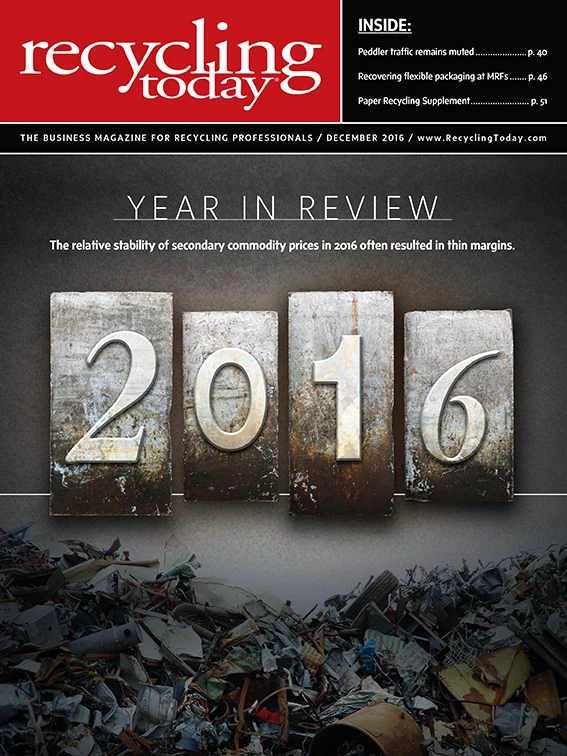
Chew on this
The chewing gum industry generates 500,000 tons of waste per year. To send less of this material to landfills, two companies have teamed up to recycle gum into other products.
Teknor Apex Co., headquartered in Pawtucket, Rhode Island, says its custom compounding expertise has enabled U.K.-based Gumdrop Ltd. to advance its program to divert chewing gum from landfill by converting it into a raw material for thermoplastic elastomers (TPEs).
“Like standard TPEs, the Gum-Tec compounds we have developed exhibit a low compression set, can be formulated for either glossy or matte finishes, readily accept colors and are recyclable,” says Stef Hordijk, senior market manager for Teknor Apex.
The chewing gum material comprises up to 30 percent of the new gum-based TPE compounds.

Streamlining shredding
Do you always remove steel staples prior to recycling paper documents? WhatBox Inc. has eliminated this task with its newest product—Paples, shreddable staples made almost entirely of paper. The Birmingham, Alabama-based product design company says Paples fit into any standard stapler and streamline the shredding and recycling of stapled documents by eliminating the need to remove steel staples prior to shredding.
“The goal in creating Paples was to take what was once a masterful product and improve it with reusable materials to reduce waste and increase sustainability,” says WhatBox founder and Paples creator Mazy Holiday. “Paples save time and leave business owners with no excuse not to recycle.”

Fishing for Energy
When people go fishing, they typically walk away with a fresh catch but not always with all of their old fishing gear. Thanks to the Fishing for Energy partnership, which offers collection bins for recycling and disposal of gear, more than 3 million pounds of derelict fishing gear and marine debris have been removed from local waters since 2008.
The organization recently announced a partnership with the Port of Grays Harbor’s Westport Marina to recycle an estimated 1,050 crab pots and other marine debris.
The project is being managed by The Nature Conservancy and the Quinault Indian Nation. A new Fishing for Energy collection bin has been placed at the Westport Marina in Westport, Washington.
Fishing for Energy is a nationwide partnership between the National Fish and Wildlife Foundation (NFWF); the National Oceanic and Atmospheric Administration (NOAA) Marine Debris Program; Covanta, a Morristown, New Jersey-based waste and energy solutions company; and Schnitzer Steel Industries, a Portland, Oregon-based metals recycling and steel producing company.
Explore the December 2016 Issue
Check out more from this issue and find your next story to read.
Latest from Recycling Today
- Orion ramping up Rocky Mountain Steel rail line
- Proposed bill would provide ‘regulatory clarity’ for chemical recycling
- Alberta Ag-Plastic pilot program continues, expands with renewed funding
- ReMA urges open intra-North American scrap trade
- Axium awarded by regional organization
- Update: China to introduce steel export quotas
- Thyssenkrupp idles capacity in Europe
- Phoenix Technologies closes Ohio rPET facility





